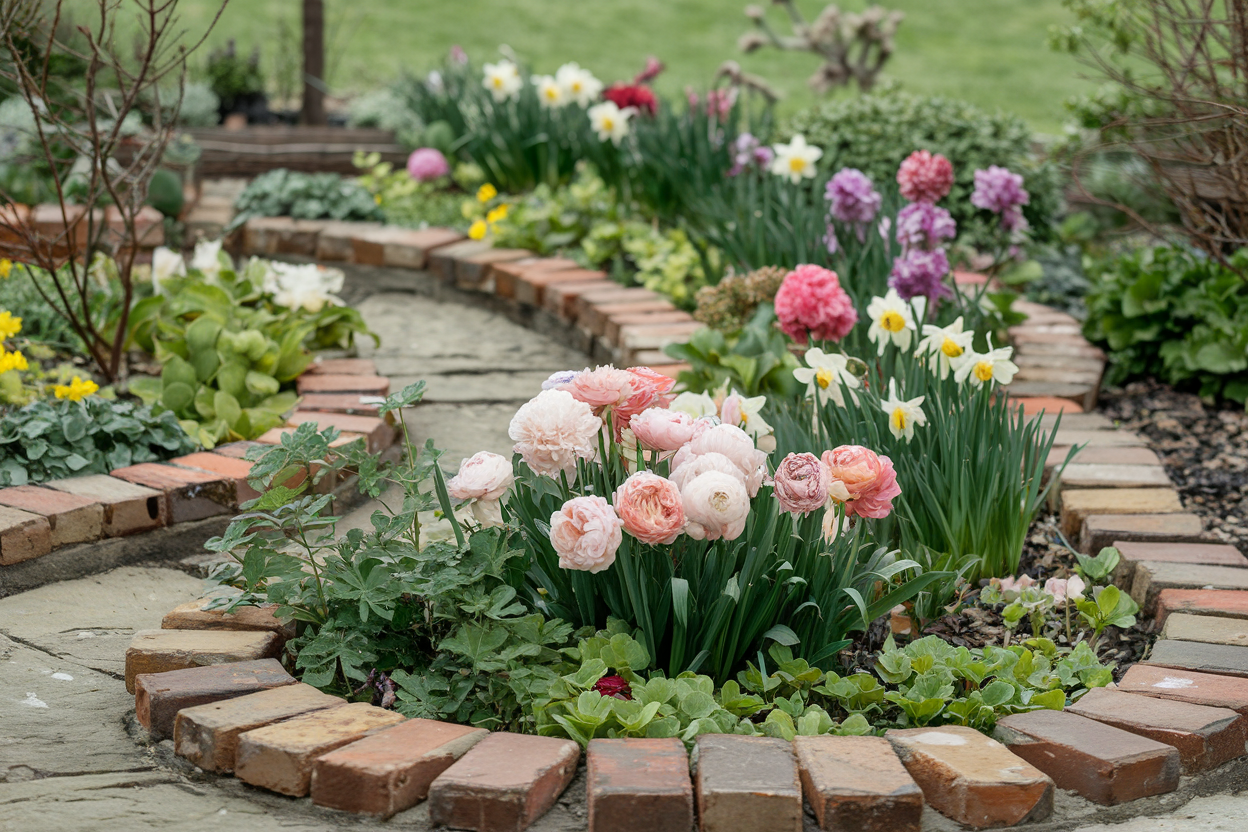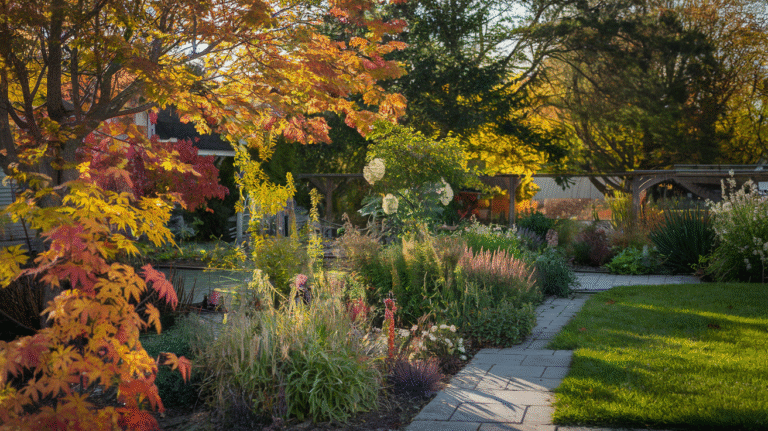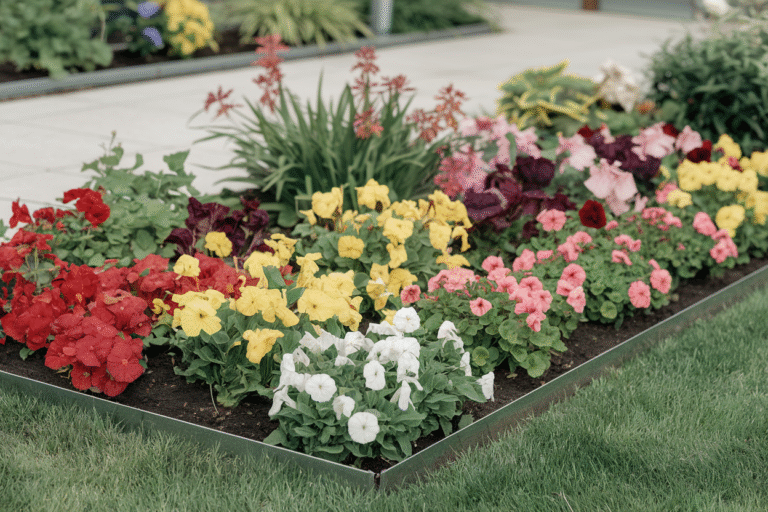Raised Bed Edging Ideas to Upgrade Your Garden
This site contains affiliate links. I may earn a small commission, at no extra cost to you.
Why Edging Your Raised Beds Actually Matters
Let’s be honest—anyone can throw together a few planks, fill ’em with soil, and call it a garden bed. But if you’re aiming for a space that looks put-together and stays that way? You need to start looking into raised bed edging ideas.
Seriously, adding the right edging is like giving your garden beds a glow-up. It’s not just about looks (although yes, it will make everything look Pinterest-perfect). It’s about function—keeping soil where it belongs, defining spaces, and making your life easier when it comes to mowing and maintenance. Raised bed edging ideas are like the unsung heroes of garden design: subtle, but powerful.
Classic Wood Edging: A Natural Favorite
If there were a popularity contest for raised bed edging materials, wood would probably win by a landslide. It’s warm, it’s rustic, and it blends right into your garden like it was born there. Whether you go with cedar, redwood, or even pressure-treated lumber (if you’re okay with chemicals), wood edging is reliable, affordable, and easy to DIY.
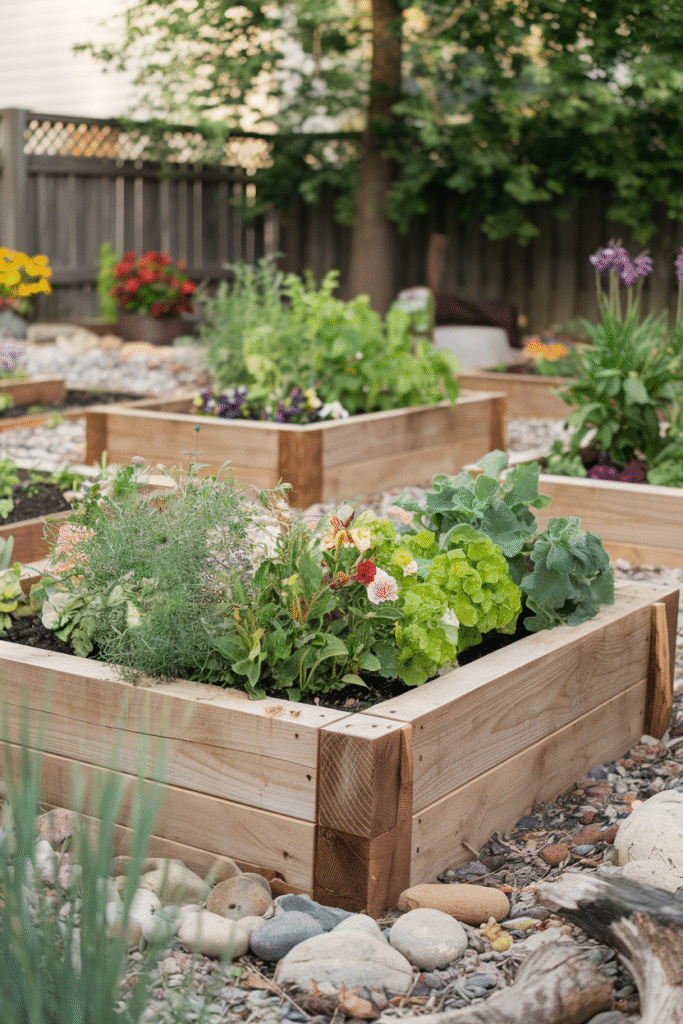
Things to love about wood edging:
- Budget-friendly and beginner-approved
- Customizable—cut it to whatever shape or size you want
- Naturally good-looking (unlike your last attempt at pruning…)
Just a heads up: untreated wood won’t last forever. It’ll weather, rot, and eventually need replacing. But hey, maybe that’s a good excuse for a garden refresh every few years?
Metal Edging: Sleek, Modern, and Durable
Feeling a bit more “industrial chic” than “cozy cottage”? Then metal might be your move. Think corten steel, aluminum, or even galvanized panels. They bring sharp lines, a clean look, and serious staying power to your raised beds.
What makes metal edging awesome:
- Practically indestructible—weather, pests, time? No problem.
- Low-maintenance—you set it and forget it
- Gives structure to otherwise wild garden spaces
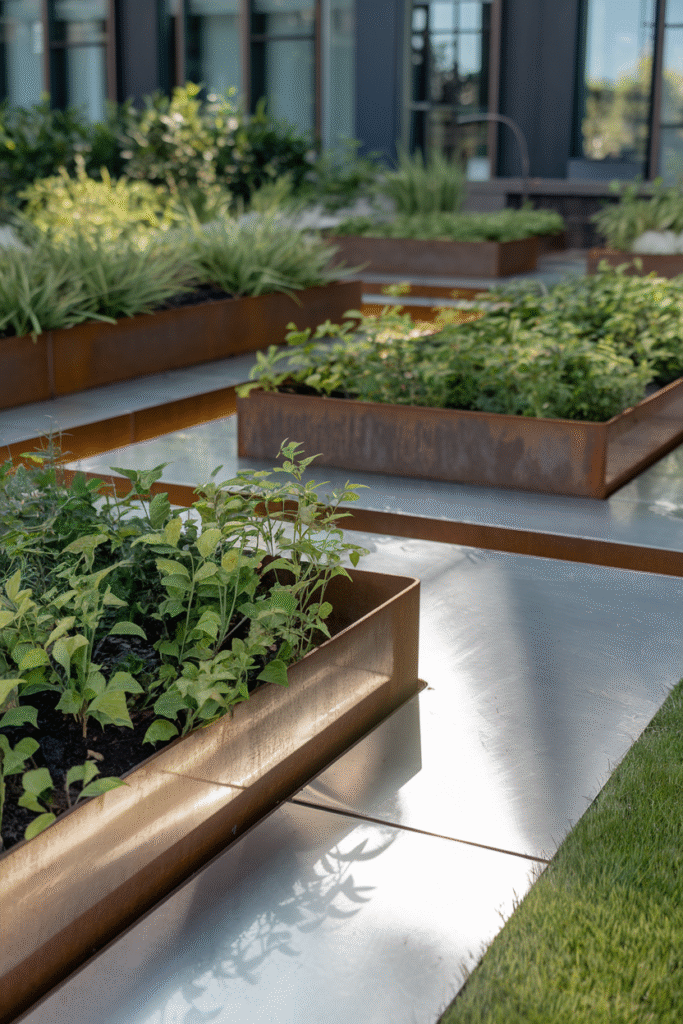
Just be warned: metal heats up in the sun. So if your garden gets full blast afternoon rays, maybe don’t place tender greens too close to the edges. Unless you’re into crispy spinach. 🥴
Stone and Brick: For That Built-to-Last Vibe
If you want your garden to look like it came straight out of an English countryside magazine, you can’t go wrong with brick or stone edging. These materials bring instant charm, not to mention major durability points. And honestly, they just feel fancy in the best way.
Why brick and stone might be your new favorites:
- Timeless style—they’ll never look outdated
- Zero rot risk unlike wood
- Perfect for curved or freeform beds
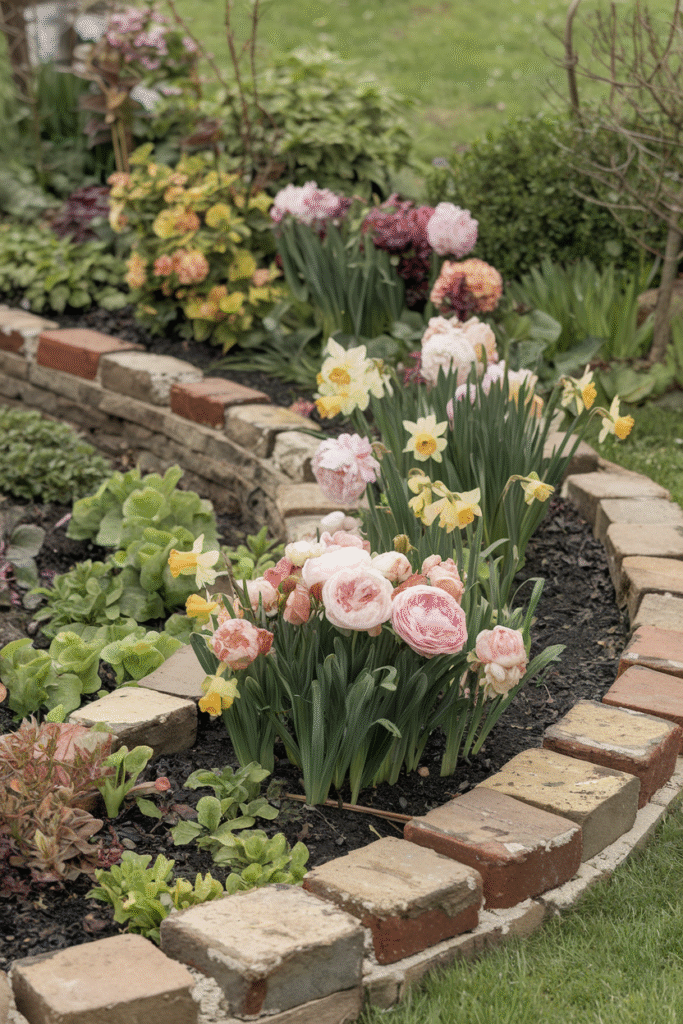
The catch? Installation takes a bit of elbow grease. And maybe a few curse words. But once it’s done, it’s done. These babies aren’t going anywhere for decades.
Concrete: The Power Player of Garden Edging
If your vibe is bold, structured, and minimal, concrete edging might be exactly what you need. Whether you go for pre-made blocks or pour your own molds, concrete offers total control over shape, height, and layout.
What’s great about concrete:
- Ultra-durable—like, apocalypse-proof
- Looks super clean and modern
- Doubles as seating if you build it wide enough (we love a multitasker)

It’s definitely a more permanent option—translation: it’s not something you want to re-do next spring on a whim. But if you’re playing the long game? Concrete edges are a boss move.
Reclaimed and Upcycled Materials: Budget and Earth-Friendly
Let’s talk DIY magic for a second. If you’ve got a pile of leftover bricks, wine bottles, roof tiles, or even old fence posts, congratulations—you’ve got yourself some creative raised bed edging ideas just waiting to happen.
Why go recycled?
- It’s practically free (and who doesn’t love free?)
- Eco-conscious—less waste, more wow
- Unmatched personality—nobody else will have your exact look
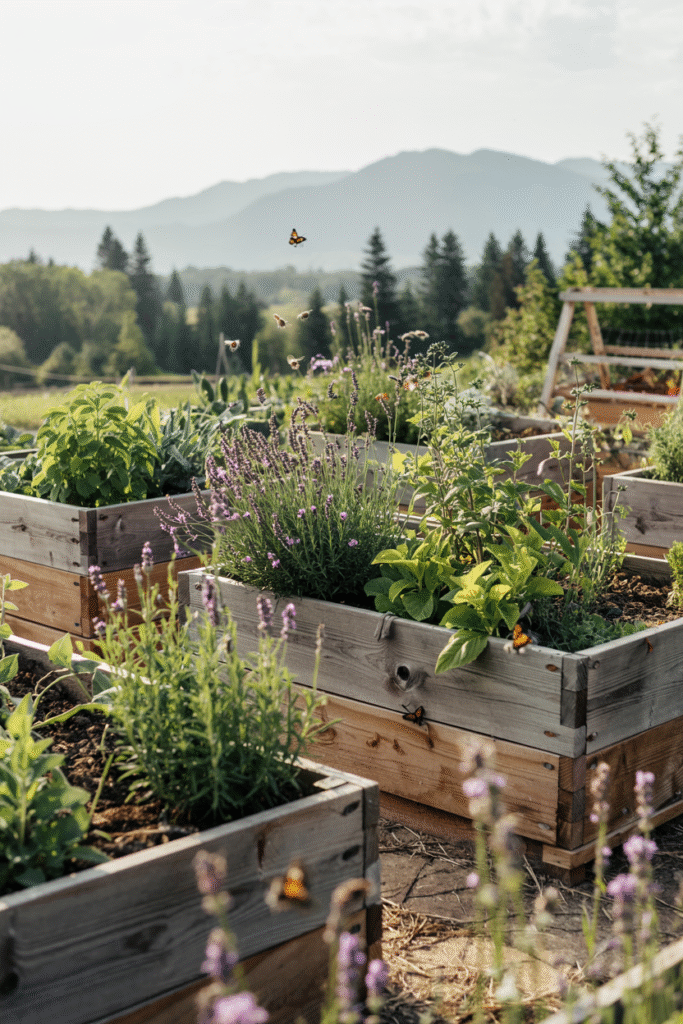
Whether you’re channeling vintage, rustic, or quirky, using what you’ve already got lying around gives your garden some serious character. Just make sure whatever you use won’t leach anything weird into your soil—because toxic tomatoes? Nope.
Edging with Plants: Yes, That’s a Thing
Not all raised bed edging ideas have to be made of hard materials. In fact, one of the most charming (and fragrant) ways to edge a bed is to do it with plants. Think low-growing herbs like thyme or lavender, tidy shrubs, or even boxwood if you’re feeling formal.
Why green edging works:
- Softens the look of your raised beds
- Adds texture and color
- Brings in pollinators (hello bees 🐝)
Of course, this method doesn’t contain soil like solid edging does, and it requires trimming now and then to keep it from going rogue. But if you’re into lush, layered gardens, it’s totally worth the extra effort.
Perfect Edging for Veggie Gardens
When it comes to growing food, edging isn’t just about the aesthetics—it’s about control. Raised bed edging ideas for vegetable gardens need to be sturdy, non-toxic, and practical. Because the last thing you want is for your kale to tumble into the pathway or your mulch to wander into the lettuce.
Top tips for veggie bed edging:
- Use untreated wood or food-safe metal (because, y’know, eating)
- Go higher to keep critters out and soil in
- Consider adding caps or ledges for sitting or kneeling while you garden

And if you want to be extra, you can paint or stain the outside of your edging in bold colors to jazz up your veggie patch. Who said tomatoes can’t be trendy?
Tips to Make Any Edging Last Longer
No matter which material you choose, a little prep and maintenance goes a long way. Here’s how to get the most out of your raised bed edging:
- Level your ground before installation for a clean, stable fit
- Add a weed barrier underneath to stop the grass from crashing the party
- Secure your materials properly—stakes, screws, or adhesive, depending on what you use
- Inspect once a season to fix wobbly edges, rot, or rust before it becomes a project
Remember, edging isn’t just decorative—it’s structural. Treat it with a little care, and it’ll keep your garden looking sharp for seasons to come.
Choosing What’s Right for Your Garden
Not sure which of these raised bed edging ideas is the right one for you? Ask yourself a few things:
- What’s your garden style? Rustic, modern, cottagecore chaos?
- What’s your budget? (Be honest. Your garden doesn’t need a mortgage.)
- How much time do you want to spend building it? Weekend warrior or quick-fix pro?
- How long do you want it to last? Are you okay redoing it in 3 years, or do you want a lifetime border?
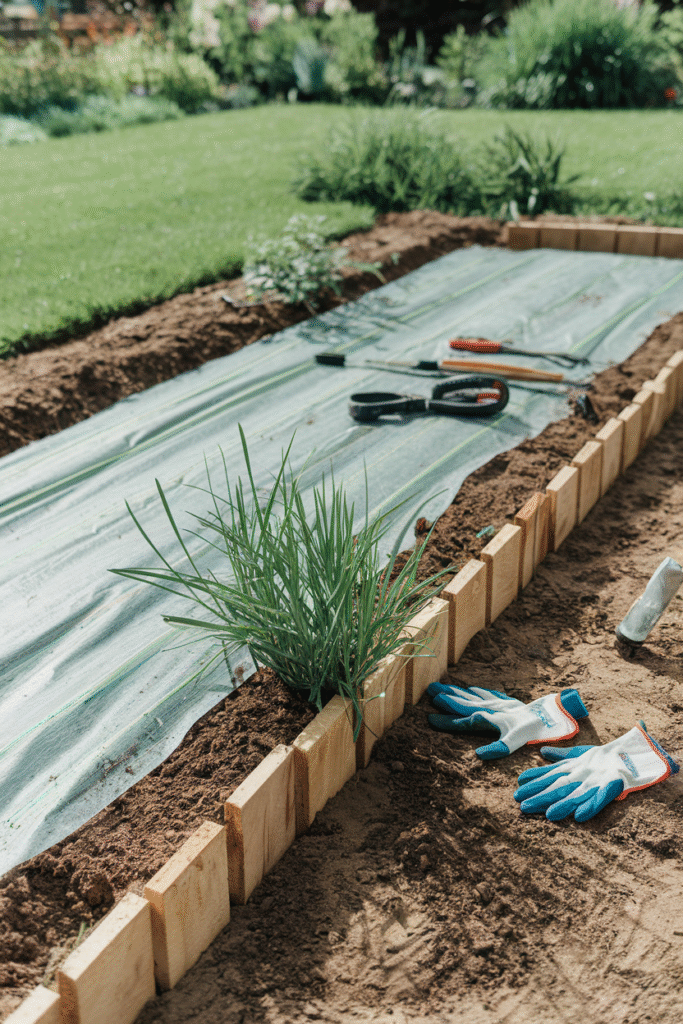
The best part? You can mix and match. Use metal for your veggie beds, brick for the front yard flowers, and recycled wine bottles for that quirky side patch. There’s no rule that says everything has to match perfectly—your garden, your rules.
Wrapping It Up: Make Your Garden Beds Pop
Let’s face it: plain raised beds are fine. But raised beds with proper edging? Now that’s garden goals. The right border not only elevates the look of your space but also makes everything easier to maintain and more fun to show off.
So whether you’re going for modern, rustic, recycled, or plant-powered, take the time to explore different raised bed edging ideas that actually fit your vibe—and your lifestyle. Because at the end of the day, good edging means a garden that looks better, functions better, and gives you one less thing to stress about. (And really, don’t we all need that?)
Now grab your gloves, your favorite beverage, and start upgrading those beds. Your garden deserves it.

